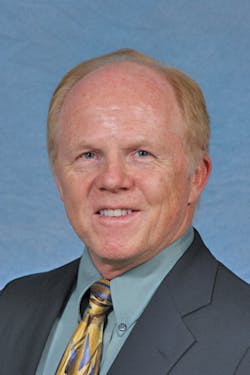Board Diversity Brings Strength and Vision to IECA
We seldom pause to assess the value of the similarities and the differences between associates in an organization. Consider the IECA Board of Directors. It might seem that board decisions will be easily reached and will always be for the greater good of the association if all directors bring the same life experiences to the table and are of the same mind looking forward. There is a saying that goes something like this: “The sum of us working together can be greater than the total of us working as individuals.” This saying certainly applies to a group such as the IECA Board of Directors, but it does not mean everyone must think the same or want the same decision.
Board members can suffer from “sameness.” Most boards are made up of ordinary people with a goal of giving back to their association. If the potential board members are drawn from a small pool, one of the worst things that could happen would be for all of the directors to be of the same experience and mindset.
A good balance for a board is if, when considering an issue, questions are encouraged and differences are explored. In this way, all sides of an issue are examined and given fair consideration. This environment can result in a highly effective board that embraces constructive dissenting opinions and considers all ideas in shaping the future of the association.
When the board of directors is working together, there is a feeling of teamwork, shared vision, and a sense of the mission of IECA. This may appear to be inconsistent or impossible if the board consists of a diverse group of individuals. But that also is the beauty of a potent board of directors. At its strongest, the board is a team of talented and experienced people who bring unique strengths and offset each other’s weaknesses. Despite diverse backgrounds, they should all be at the table for the same reasons-pursuing the agenda of IECA and strengthening and guiding the association.
When the board is at its healthiest, the members will put the interests of the association ahead of their personal agendas. When each director has an open mind and is receptive to unexpected ideas or concepts, it is a stimulating and productive environment for the board. Respect for the varied ideas of fellow board members is essential, and courteous dialogue is the path to success.
The IECA board functions well in examining new topics and in hearing the pros, the cons, and the skepticism surrounding an issue. Each board member plays a key role in the development, definition, and direction of IECA, and that role is linked to the wide-ranging experiences and talents brought to the board by the individual directors. A varied group of individuals on the board of directors is a key way in which diversity adds strength.
Each director is an integral part of the fabric that makes up the board. When an election brings a new person to the board, there will be a change to the fabric, but the fabric will still be whole and the board will maintain its focus on the direction for the association. As I now leave the IECA Board of Directors, I am being replaced by Charles Riling. Charles brings a new set of talents, experiences, questions, and answers to the board. Here is where the fabric of the board changes, and here is where the fabric remains whole.
No single board member can be all things to serve all the needs of the board. No one knows everything. If all nine IECA directors were the same, there would be no need for nine of them. Hollywood director Daryl Zanuck once said, “If two men on the same job agree all the time, then one is useless. If they disagree all the time, then both are useless.” Extend this idea to the IECA board and one gets an idea of how important it is for the individuals to have diversity of ideas, diversity of experiences and diversity of visions.
As IECA progresses toward redefining its international structure, some of the issues before the board will take on a new dimension. This may bring new challenges to the board, but this is not to be feared or avoided. The board will make progress as long as it continues to keep foremost the interests and mission of IECA and to encourage probing questions and broad debate. Remember, tremendous capacity and strength exist in a diverse group of directors.
The advantages to be gained from a diverse board of directors when applied toward the common goals of IECA far outweigh any disadvantages. Keep up the good work, IECA!


